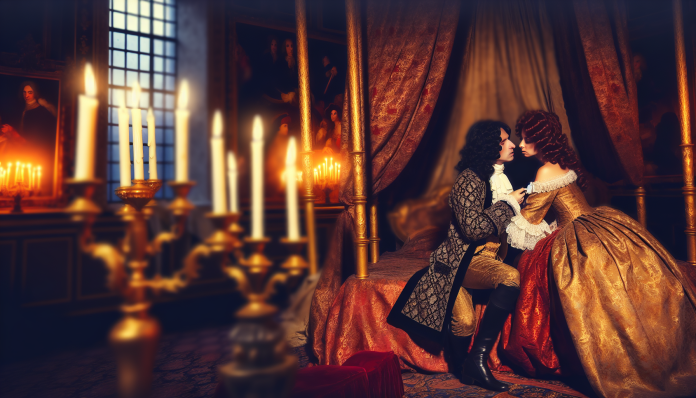Introduction
At the turn of the 20th century, the Russian Empire found itself entangled in one of the most infamous scandals of its time: the relationship between Tsarina Alexandra, the wife of Tsar Nicholas II, and the controversial mystic, Grigori Rasputin. Their entanglement not only challenged the rigid moral standards of the period but also foreshadowed the impending doom of the Romanov dynasty. This article dives deep into the intricate web of scandal, societal norms, and the personal liberties at stake, exploring how perceptions of this historic drama have shifted in modern times.
The Scandal Unveiled
In the tumultuous years preceding the Russian Revolution, Rasputin emerged as a charismatic and enigmatic figure. Initially hailed as a holy man with extraordinary healing abilities, he quickly gained access to the highest echelons of power in Russia. His influence over Alexandra grew profoundly, especially during a time when their son, Alexei, suffered from hemophilia. Rasputin appeared to alleviate Alexei’s suffering, further embedding himself in the royal family.
A Dangerous Liaison
Rumors began to swirl around Rasputin and Alexandra, fueled by their close friendship and the society’s fascination with Rasputin’s unconventional persona. Accounts of Rasputin’s supposed sexual escapades and his supposed seduction of the Tsarina circulated wildly, leading to sensationalist press coverage. Public figures in Russia and Europe became embroiled in heated discussions about the moral fabric of the royal family, with some defending Alexandra as a devoted mother and others pillorying Rasputin as a wicked seducer.
Rasputin’s influence became so pronounced that it led to widespread resentment among the nobility and common citizens alike. The scandal reached a tipping point when several members of the royal court, alarmed by Rasputin’s sway over the Tsarina, conspired to assassinate him. His eventual murder in 1916 marked a significant escalation in public dissent against the monarchy.
Public Reactions and Perspectives
At the time, the notion of a woman of Alexandra’s stature engaging in an intimate relationship with a so-called “mad monk” was scandalous. The Russian Orthodox Church, among other institutions, condemned their relationship. Traditional gender roles were strictly adhered to in early 20th-century Russia, and Alexandra’s actions were viewed through the lens of betrayal—both to her husband and to the ideals of femininity.
- Key Figures: Prominent figures, including members of the Duma and various nobility, spoke out against the Tsarina, claiming that Rasputin’s influence was leading Russia toward ruin.
- Contemporary Reactions: The Western press had a field day with the scandal, labeling Alexandra an immoral figure and portraying Rasputin as a demonic seducer, further complicating the dynamics of power within the monarchy and society as a whole.
Moral and Cultural Analysis
Society’s Reaction
The early 20th century was marked by rigid societal morals, particularly regarding sex and relationships. The scandal involving Alexandra and Rasputin unraveled not only personal reputations but also challenged the monarchy’s stability. As the revolution loomed, the public’s outrage against the couple reflected broader societal unrest and disillusionment with the ruling class.
- Consequences: The fallout from the scandal would ultimately contribute to the abdication of Tsar Nicholas II in 1917 and the tragic fate of the entire Romanov family. Rasputin’s death did not quell the unrest; instead, it symbolized the downward spiral of an empire already teetering on the brink of collapse.
A Modern Perspective
Fast forward to today, many aspects of the Tsarina and Rasputin’s relationship would likely be reframed through contemporary lenses of personal freedom, agency, and feminism.
- Gender and Power: While Alexandra’s actions might still attract scrutiny, contemporary discussions would emphasize her struggle for autonomy in a male-dominated society rather than solely focusing on alleged impropriety.
- Complexity of Relationships: Rather than viewing the relationship in binary terms of right and wrong, a modern audience would likely appreciate the multifaceted nature of human relationships, considering emotional support, power dynamics, and societal expectations.
Conclusion
The scandal between Tsarina Alexandra and Rasputin serves as a powerful reminder of how personal relationships can intersect with broader societal upheavals. This tale not only illuminates the strict moral codes of the early 20th century but also reflects the tumultuous nature of power and personal freedom.
As we navigate our modern realities, it is essential to consider how history shapes our perceptions of morality, gender, and authority. The saga of Alexandra and Rasputin invites us to reflect critically on our values and encourages an understanding of the deeply human experiences that continue to resonate across time.
Takeaway
Through the lens of history, we can gain insightful perspectives on modern values, revealing how far society has come—and how fraught the journey continues to be. Engaging with stories like that of Alexandra and Rasputin challenges us to sift through the layers of judgment and morality, urging us towards a broader understanding of human experience within the realm of sexuality and power dynamics.
This article is structured to engage the modern reader while offering a window into a fascinating period of history, maintaining a balance of historical context and contemporary relevance.

